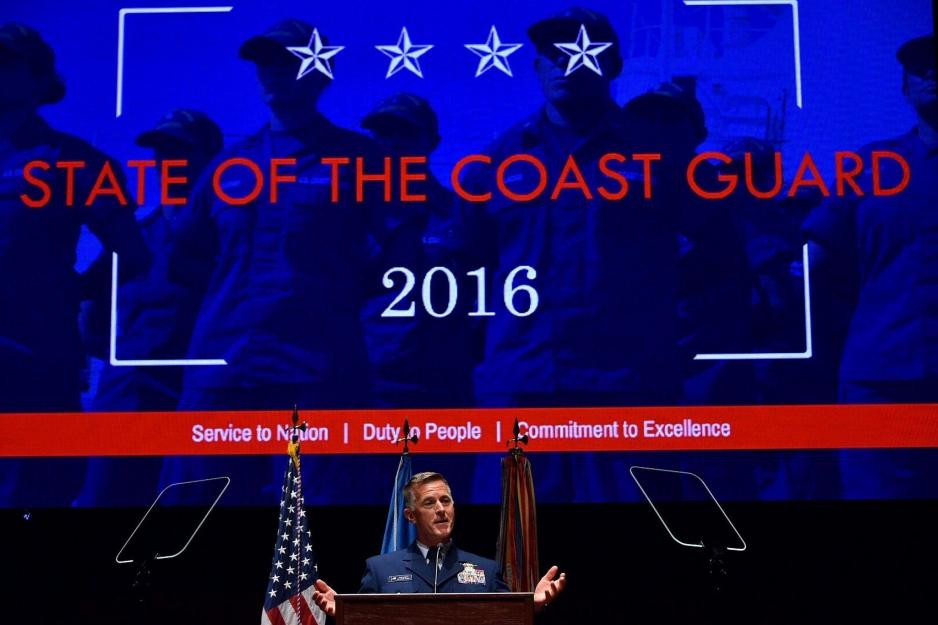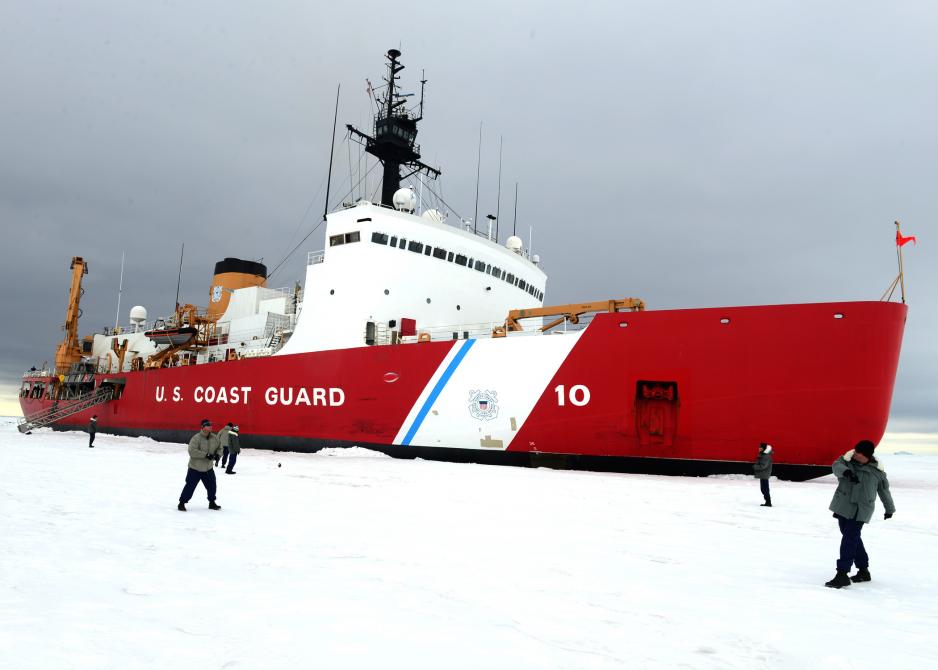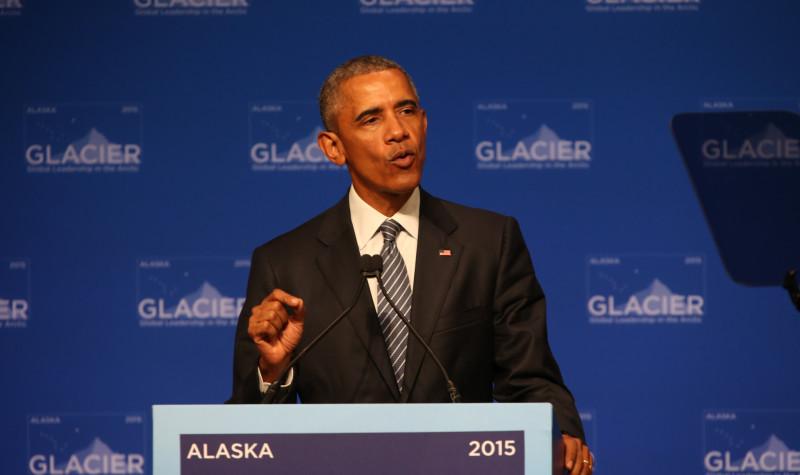Coast Guard says proposed budget enables icebreaker procurement

The United States Coast Guard is pleased with Obama’s 2017 budget request, which provides initial funding for the acquisition of a new heavy icebreaker.
Commandant of the U.S. Coast Guard, Admiral Paul Zukunft opened the State of the United States Coast Guard address on Tuesday last week by thanking Congress and the Administration for the recent budget proposal. “The President’s budget for 2017 paves the way to recapitalize our Nation’s diminishing fleet of heavy icebreakers,” he said in his speech.
Largest acquisition budgets in history?
During the address, Adm. Zukunft said that the Coast Guard’s 2017 acquisition budget request is the largest in history.
Over the past 3 years the Coast Guard has faced a decreasing budget, which has made it nearly impossible to start a high cost icebreaker project.
While the Coast Guard has testified that acquisition programs would require an Acquisition, Construction, and Improvements (AC&I) account of roughly $1.5 billion to $2.5 billion, the budget submissions in 2014-2016 have been reduced to $1 billion to $1.2 billion per year.
The FY2017 acquisition budget request was $1.14 billion, which is higher than the FY2014-FY2016 budgets, but is significantly lower than the budgets requests before this timeframe, and lower than the Coast Guard’s estimates for required funding. Thus, the 2017 request continues the general trend of lower AC&I funding that began in 2013.
$150 million to fast-track construction
The FY2017 budget provides $150 million to accelerate the acquisition of a new Polar icebreaker to begin production activities by 2020.
This is a sharp increase from previous years. According to Ronald O’Rourke, a Specialist in Naval Affairs at the Congressional Research Service (CRS), funding has increased from a projection of $10 million under the 2016 submission to an actual request of $150 million in the 2017 request. This is a sharp contrast to the decrease in icebreaker funding over the last few years.
As table 1 shows, the FY13 submission was $8 million, FY14 was $2 million, FY15 was $6 million and FY16 was $4 million:

In total, the cost of building a new icebreaker is roughly $1 billion.
The U.S. Coast Guard has been pushing for funding for a heavy icebreaker for a while. With the opening of the Arctic region, new resources and shipping routes have become available.
The increased economic activity raises a need for protection of the environment and safety operations. The U.S. Coast Guard has a vital role in providing safety and security in the Arctic region, and this is not possible without functioning icebreaking vessels. In January this year the Coast Guard released a draft data package outlining the program schedule and the requirements for a heavy icebreaker – all before knowing if necessary funding would be acquired.
Bipartisan support
The icebreaker issue has also gained bipartisan support from representatives in the Senate and Congress. Before the U.S. assumed chairmanship of the Arctic Council last year, Senators Lisa Murkowski (R-Alaska) and Angus King (I-Maine) formed an Arctic caucus to bring focus to the region.
The need for a heavy icebreaker has been an important part of their focus. Murkowski said at a conference on icebreaker operations earlier this year that for those living in the North, icebreakers are an integral part of the infrastructure.
The Senator has called the icebreaker funding request a “positive step in the right direction”, but warns that “federal budgets are expressions of priorities, not actual spending.”
She is a member of the Appropriations Committee and Chair of the Interior Appropriations Subcommittee and represents an influential voice in the process of implementing the budget.
One icebreaker is not enough
At an Appropriations Committee hearing on the Coast Guard’s Arctic assets last week, Sen Murkowski urged for the production of more than just one icebreaker. She stated to Secretary of Homeland Security Jeh Johnson that there is a need for three heavy icebreakers and three smaller icebreakers.
When President Obama visited Alaska in September last year, he made an urgent call for the construction of new Coast Guard icebreaker. In conjunction with the visit, the White House issued a fact sheet pushing the procurement of a new icebreaker from FY2022 to FY2020.
The fact sheet also states that the Administration will begin planning for construction of additional icebreakers beyond the FY2020 one.
No insurance policy
Currently the U.S. operated one heavy icebreaker, the Polar Star, which is nearly 40 years old. Without refurbishing it is likely to go out of function around 2020-22. Adm. Zuknuft said during his address that it causes him great discomfort that the U.S. has no insurance policy or no self-rescue capability whatsoever should something happen to the Polar Star.
O’Rourke at CRS has underlined that even with the announced schedule of starting production of an icebreaker by 2020, the U.S. will be without an icebreaker for 5-6 years.
Regional cooperation on Coast Guard activities
Adm. Zukunft also underlined the importance of the Arctic Coast Guard Forum, which was established in 2015. The forum will enable all Arctic nations to cooperate on Coast Guard activities and will according to Zukunft “ensure that shared responsibilities for mass search and rescue, pollution response and safe navigation remain paramount among Arctic nations.”
There are however large differences in the capabilities of the members of the forum: Russia has 41 icebreakers, and is planning to build 14 more. Both Sweden and Finland have 7 icebreakers each and Canada has 6.
In this context, the U.S. is lagging behind.



President Obama made an urgent call for the production of a new icebreaker at the GLACIER Conference in Alaska last year. (Photo: GLACIER)
